I know I’m biased, but Valencia is bursting at the seams with jaw-dropping sights and attractions. Not only that, but it’s really easy to see most of them on a short 3 days trip.
This is one of the many reasons I love Valencia – everything is close together and oftentimes, you can walk from one landmark to another in a matter of minutes.
Although I’m living in Valencia, I enjoy going to museums and visiting the occasional tourist attraction on laidback Sunday mornings. But many of Valencia’s must-see spots are actually beloved local hangouts with a distinct, authentic flair.
From tasty markets and orange tree lined plazas to awe-inspiring architecture and miles-long beaches, these are, in my opinion, the best places to visit in Valencia on a short trip.
In This Article
1. The City of Arts and Sciences
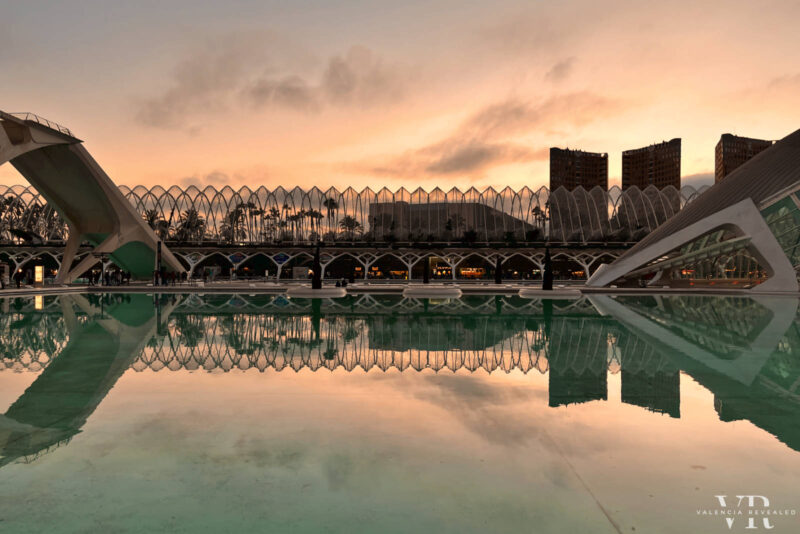
The City of Arts and Sciences is arguably the most important tourist attraction in Valencia. I don’t know a single soul who wouldn’t agree that this architectural masterpiece designed by Santiago Calatrava is a sight to behold.
A few years ago, a friend of mine who was an architecture student at the time, came to Valencia just to see these mesmerizing buildings. Yes, they study them in universities around the world! So you certainly don’t want to miss this futuristic landmark when in Valencia.
The City of Arts and Sciences consists of six incredible buildings, each with its unique design and purpose. One of them is a stunning opera house, another is a family-friendly science museum, and so on.
I often come here to catch the sunset, but I think it’s fascinating how this city within a city can be whatever you want it to be.
If you’re visiting Valencia with kids, this is a wonderful place to spend some quality time together as a family. If you are on a romantic getaway, it can be the perfect place to walk hand in hand among the blue pools of water. Traveling solo? You’ll never feel lonely here!
The City of Arts and Sciences is free to wander around but if you want to go inside the buildings to see any of the shows or exhibits, you’ll need to purchase a ticket.
2. The Oceanographic
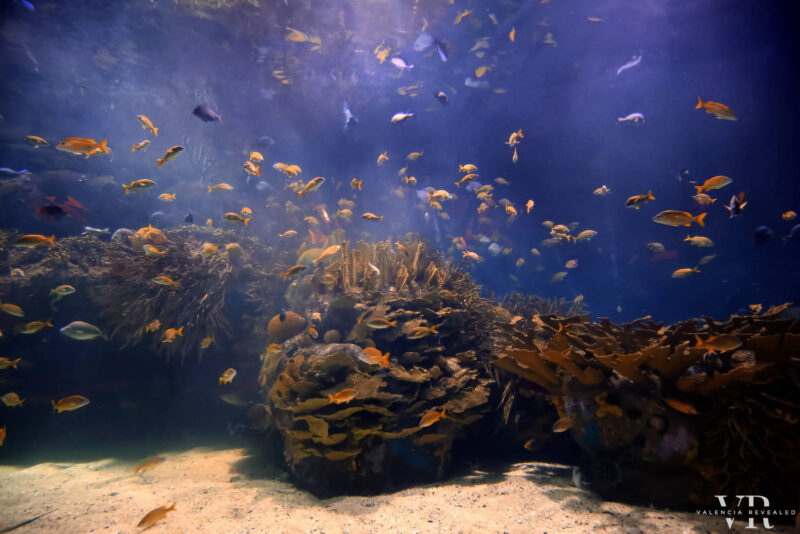
Valencia’s Oceanogràfic is an impressive aquarium and marine park that’s part of the City of Arts and Sciences complex. Families especially love it here because there are tons of fun activities to keep everyone entertained.
The exhibits at the Oceanogràfic are varied and include a diverse range of marine life. From jellyfish to penguins and sea lions, here you can learn all about the fascinating creatures that inhabit our oceans.
My favorite attraction inside the Oceanogràfic is the underwater tunnels. These sleek tunnels offer an immersive experience as you walk through while surrounded by sharks and other sea creatures.
The Oceanogràfic also hosts two thrilling dolphin shows per day and is home to the only family of beluga whales in Europe. And if you’re looking for a unique adventure you can even spend the night sleeping with the sharks!
3. The Silk Exchange (La Lonja de la Seda)
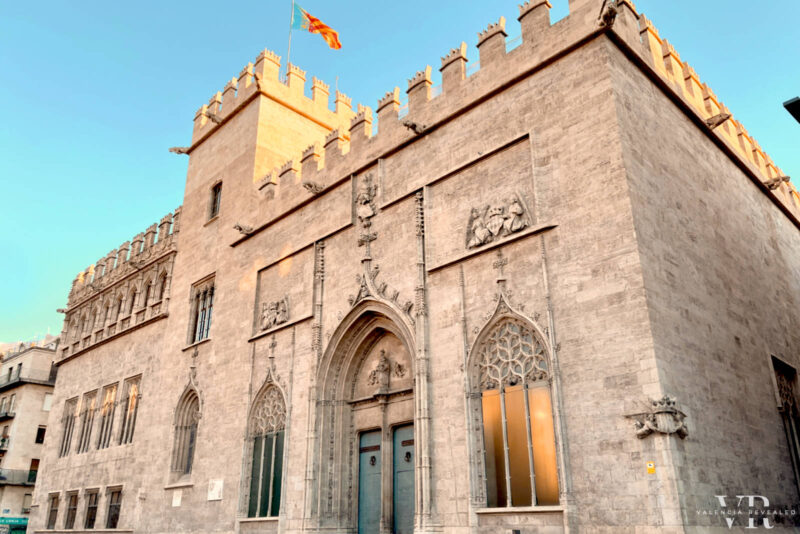
Valencia’s Silk Exchange, is a magnificent Gothic building located in the Old Town. Built towards the end of the 15th century, during the Valencian Golden Age, La Lonja was a stunning marketplace meant to leave anyone in awe.
To fully understand the importance and economic power of Valencia at the time, it’s key to note that Christopher Columbus’ voyage was founded by a Valencian banker. Incidentally, La Lonja was put into use the same year Columbus reached the Americas – 1492.
During its glory days, merchants from all over Europe would come to trade and do business here. While commerce was not limited to silk as its name suggests, given the importance of Valencia’s silk industry at the time, the silk trade likely counted for the great part of the transactions.
Today, La Lonja de la Seda is a UNESCO World Heritage Site. While the lack of furniture might put you off, the truth is that the intricate architecture and historical significance of this building make it a must-see attraction.
There are so many fascinating details about this building, that I could go on and on! For example, the main hall is a masterpiece of Gothic architecture, with twisted columns that resemble silk skeins and palm trees. This hall was used for trade agreements and also served as the location for one of the first public banks in Europe, which consisted of just one table!
Additionally, La Lonja has a tower that used to be a prison. This tower is accessed via a mind-blowing spiral staircase made entirely out of stone. What’s special about that, you might ask? It has no central axis! Pay attention to that when you visit!
4. The Cathedral
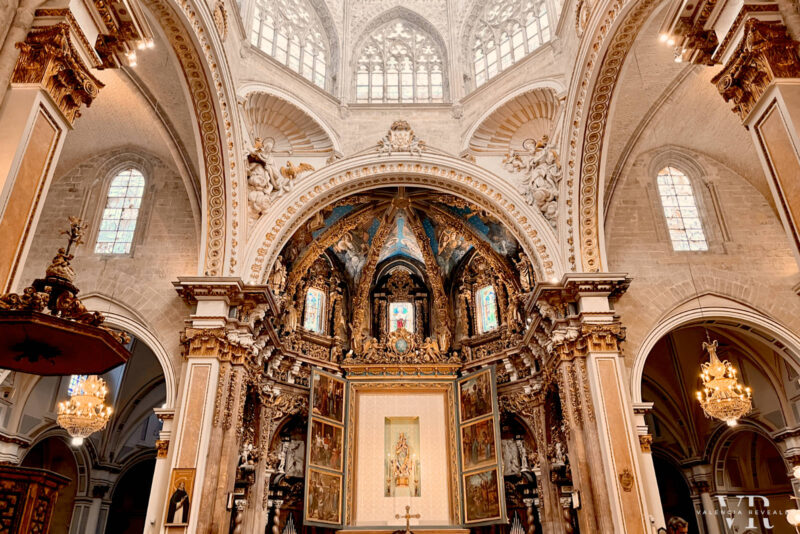
Valencia’s Cathedral, also known as the Saint Mary’s Cathedral, is a magnificent structure built on the site of an ancient mosque in the 13th century. What’s interesting is that the mosque itself had also been built over a prior Visigoth cathedral.
The main architectural style of this cathedral is Valencian Gothic, with some Romanesque, Baroque, and Neoclassical elements mixed in. While it might not be the prettiest of the cathedrals, it does have several interesting things going for it.
One of the most notable features of this cathedral is that each of the three gates was built in a completely different architectural style. So I encourage you to walk around it to see it from all angles.
Then there’s the Miguelete Bell Tower, with an interesting octagonal shape and a spiral staircase. With a total of 207 narrow steps, climbing up might not be super fun, but once you reach the top, you are rewarded with breathtaking panoramic views of the city and the bustling Plaza de la Reina and Plaza de la Virgen nearby.
Another fascinating aspect of Valencia’s Cathedral is that it is believed to host the Holy Grail, the cup that Jesus used at the Last Supper. This priceless artefact is displayed in one of the chapels, and it certainly is a peculiar attraction.
Besides, the cathedrals host 15th-century paintings and holy relics including the bones of several saints which you can see in a chapel behind the altar.
5. Serranos and Quart Towers
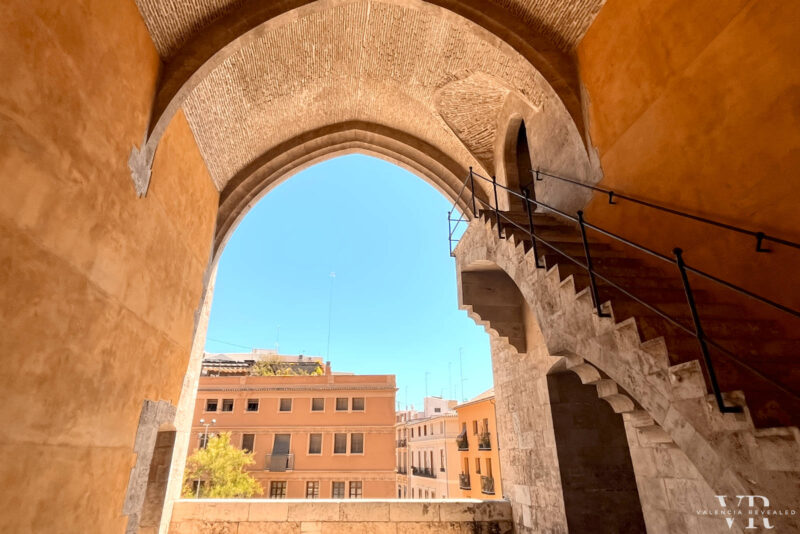
Valencia had three different walls throughout its 2000-year history – a Roman one, a Muslim one, and a Christian one. You can still find bits and pieces of these walls scattered around the Old Town, but the most notable remains are Torres de Serranos and Torres de Quart.
These iconic landmarks were built during Medieval times as part of the Christian wall, a 4 km defensive wall with 13 gates that surrounded the area that is now called the Old Town. The Medieval wall protected Valencia from the 14th century until the 19th century, before it was taken down as the city outgrew it.
The Torres de Serranos were built at the end of the 14th century and served as one of the main city gates during the Middle Ages. They were built in Gothic style and have been used for many things, including as a prison for nobles and knights and a depository for artworks from El Prado during the Spanish Civil War.
The Torres de Quart, on the other hand, was built in the mid-15th century. This tower was also used as a prison at some point, but they also took one for the team. The holes in them might be easily dismissed as simple signs of wear and tear, however, what not many people know is that they’re traces of cannon shots from the Peninsular War.
Today, both towers are important tourist attractions and I highly recommend you climb them for stunning views over Valencia’s rooftops. Trust me, it’s so worth it!
6. The Central Market (Mercado Central)
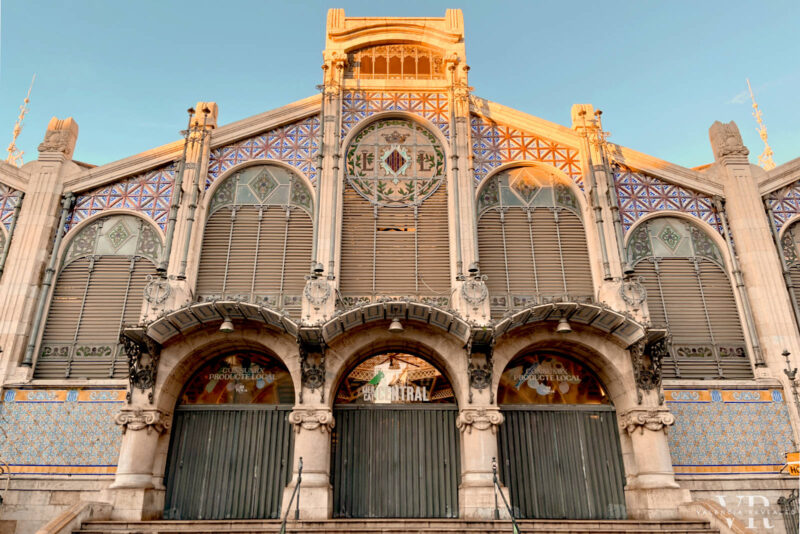
The Central Market is another must-visit attraction in Valencia. This iconic covered market was built in the early 20th century, although a market had been organized in this very spot for hundreds of years prior.
The building itself is a stunning example of Modernista architecture, with colorful tiles, a domed roof, and ornate ironwork.
Step inside, and you’ll find yourself in a bustling world of vendors selling fresh fruits, vegetables, seafood, meat, spices, and all sorts of local delicacies.
The market is a true feast for the senses, with an endless array of colors, scents, and flavors. I always find something new and delicious to sample whenever I go, be it olives, cheese, or even a new and exciting local craft beer.
Today, the market continues to be a popular spot for locals to shop for fresh ingredients, but it’s also a major tourist attraction.
Whether you’re a foodie looking for a unique culinary experience or just curious about the local food culture, the Mercado Central is a must-see place in Valencia.
7. Marquez de Dos Aguas Palace
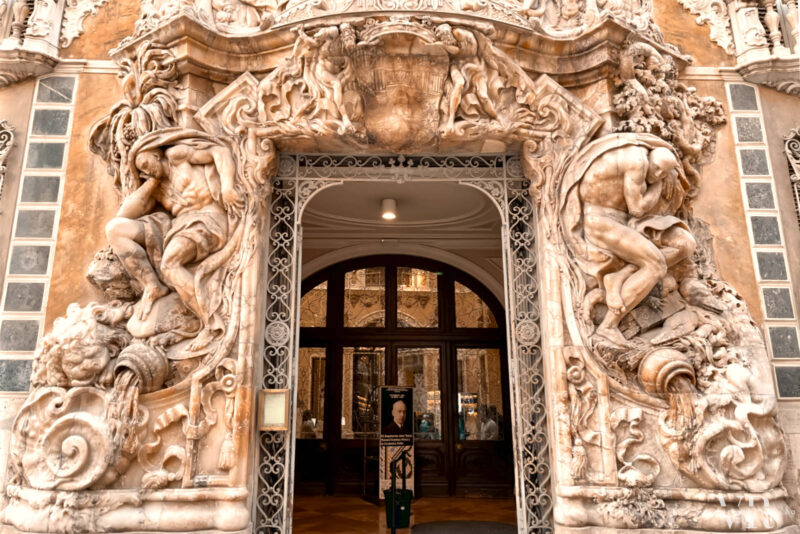
The magnificent Marquez de Dos Aguas Palace is an iconic building and a shining example of Rococo architecture that will transport you back to the 18th century.
Nowadays, the palace houses the National Museum of Ceramics and Sumptuary Arts, where you can admire hundreds of pieces of pottery, porcelain, and ceramics as well as gorgeous pieces of furniture spanning many, many centuries.
I know it might sound a bit boring, but I can assure you it’s not. This palace is one of the most beautiful places in Valencia, both inside and out.
On the ground floor, you can see two carriages fit for a queen. The second floor features lavishly decorated rooms that will take your breath away. And the last floor offers a fantastic opportunity to discover the history and art of ceramics and its importance in the local culture.
Don’t skip the last floor! This is the most important ceramics museum in Spain and some of the objects here are more than two thousand years old. Still not convinced? Maybe knowing that there are several unique pieces created by Pablo Picasso will?!
From the grand staircase to the magnificent ballroom, every room is decorated with impeccable taste. If you’re looking for a dose of history, art, and beauty, the Marquez de Dos Aguas Palace is the place to be.
8. San Nicolás Church
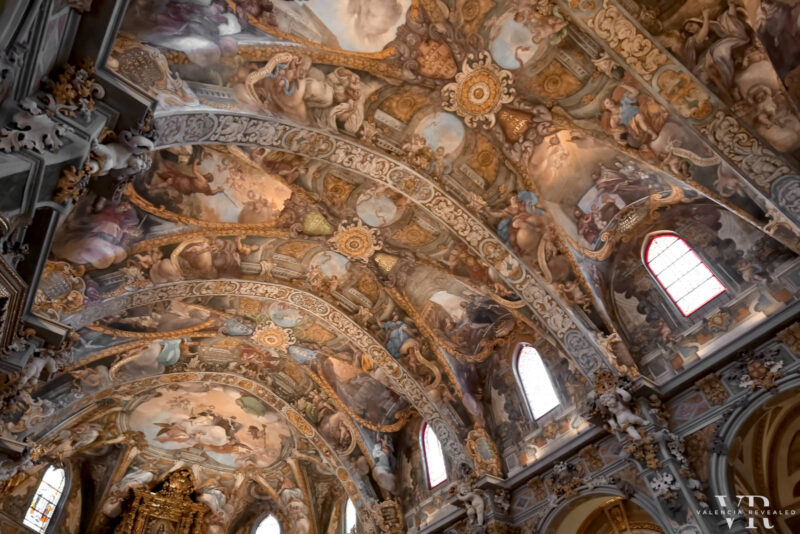
San Nicolás Church is one of the most beautiful places to see in Valencia. Located in the Old Town, not far from the cathedral, this 15th-century church hosts some of the most spectacular Baroque interiors.
As is the case with many churches in Valencia, Iglesia de San Nicolás too was built over a former Arab mosque. The mosque in turn had been built over a Visigoth temple, which had been built on top of a Roman temple.
The stunning frescoes dating back to the 17th century cover every inch of the ceiling and have gained this church the nickname of the Valencian Sistine Chapel.
In recent years, the San Nicolás Church underwent a thorough restoration project. The result is breathtaking, so don’t hesitate to put it on your list of places to visit in Valencia.
Access to the church is through Calle Caballeros, although it’s very easy to miss. Look for the signs, not for the church, as the church it’s situated at the end of a nondescript alley and cannot be seen from the street.
The church organized both touristic visits and daily masses. Touristic visits are not permitted during the mass.
9. Túria Park
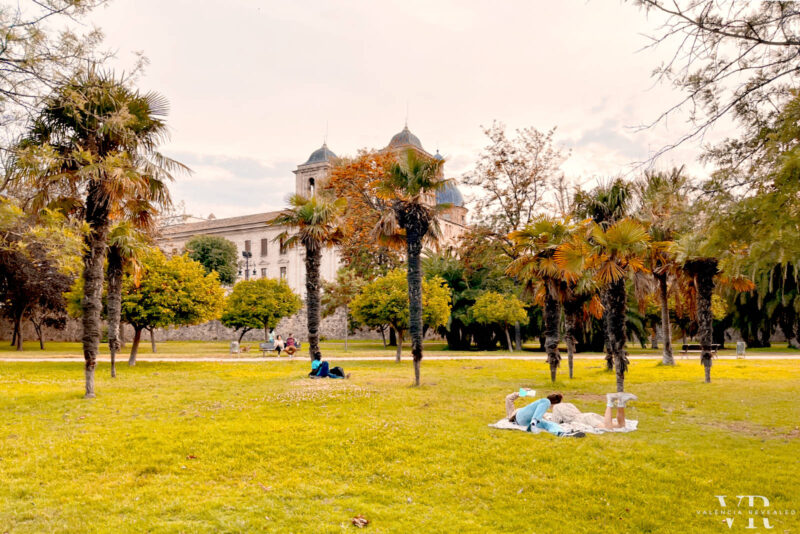
Túria Park traces its roots back to the devastating flood of 1957 when the Túria River overflowed its banks, causing significant damage.
After much debate, it was decided to divert the river to the outskirts of the city and transform the dry riverbed into a lush green space, giving birth to what is now Túria Park.
Organized with meticulous precision, the park stretches over 9 kilometers, making it the most extensive public garden in Spain.
Túria Park hosts numerous sports facilities, playgrounds, and picnic areas, providing ample opportunities for recreation and relaxation. It also has dedicated cycling lanes spanning from end to end, making it one of the best places for biking in Valencia.
Along the way, you’ll stumble upon the iconic Gulliver Park, an enormous sculpture of the legendary character from Gulliver’s Travels, which serves as an interactive playground for children.
The park also houses the stunning Palau de la Música, an enchanting concert hall known for its extraordinary acoustics.
10. Bioparc
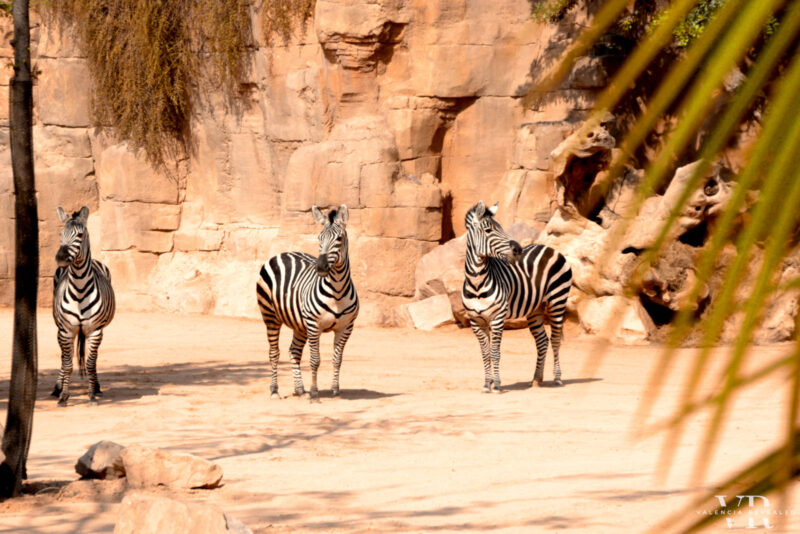
Bioparc is a zoo safari aiming to provide an alternative to traditional zoos by closely recreating the animals’ natural habitats.
The park is divided into four areas – African savanna, African wetlands, Madagascar, and the forests of equatorial Africa – and is a great place to visit no matter your age.
One of the best places to visit in Valencia, Bioparc is constantly ranked as one of the best zoos in the world. Unlike traditional zoos, the enclosures are spacious and carefully landscaped, allowing the animals to roam freely and engage in their natural behaviors.
A peculiarity of this attraction is that the barriers between the different animal species are virtually invisible. Instead, lush vegetation, cascading waterfalls, and realistic rock formations create an immersive experience.
As you wander around, you can admire an impressive array of animal species from majestic lions and graceful giraffes to playful lemurs and tropical birds.
One of Bioparc’s main attractions is the spectacular bird shows they organize daily, which I highly recommend. I also encourage you to spend some time observing the gorillas – they always make me reflect upon the close kinship between animals and humans.
11. The Botanical Garden
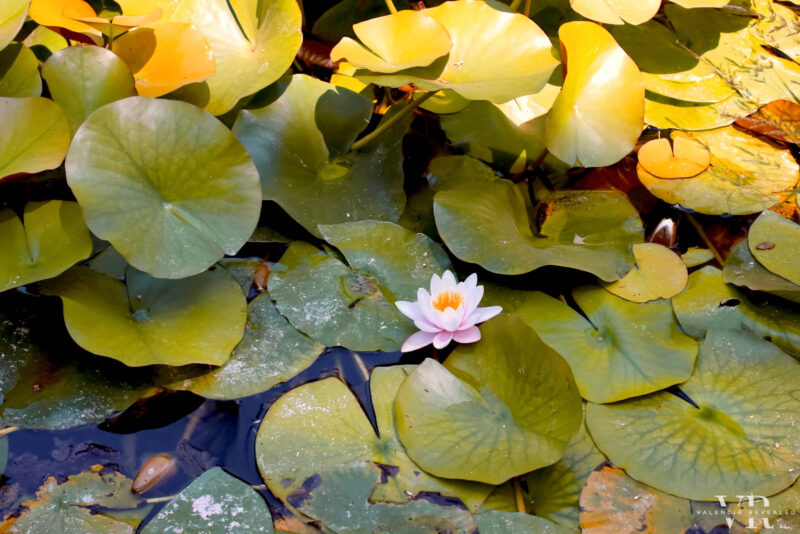
The Botanical Garden is one of the most relaxing places you can visit in Valencia. Located close to the El Carmen neighborhood and Torres de Quart, this captivating oasis hosts more than 4,000 species of plants from all corners of the world.
Plants are organized in 20 meticulously curated collections, including an impressive array of trees ranging from Illinois walnuts and American oaks to various palm tree species.
There’s also an interesting rock garden adorned with Mediterranean plants, beautiful cacti, and aloes; a serene waterlily pond; a garden dedicated to medicinal plants, and a flourishing kitchen garden.
Additionally, there are several stunning wrought iron and brickwork greenhouses housing delicate orchids, carnivorous plants, and tropical species.
Yet, my favorite thing about this beautiful Valencia attraction is that it’s home to a colony of adorable kitty cats. In summer, you’ll spot them sleeping in the shade, but in winter, these friendly felines get all cuddly and will likely come to you and try to sit in your lap.
Valencia’s Botanical Garden was founded in 1567 for the study of medicinal plants and moved to its current location in 1802. These days it is managed by the University of Valencia, and it serves as an educational hub, hosting workshops, as well as art and photography exhibitions.
12. Mercado de Colón
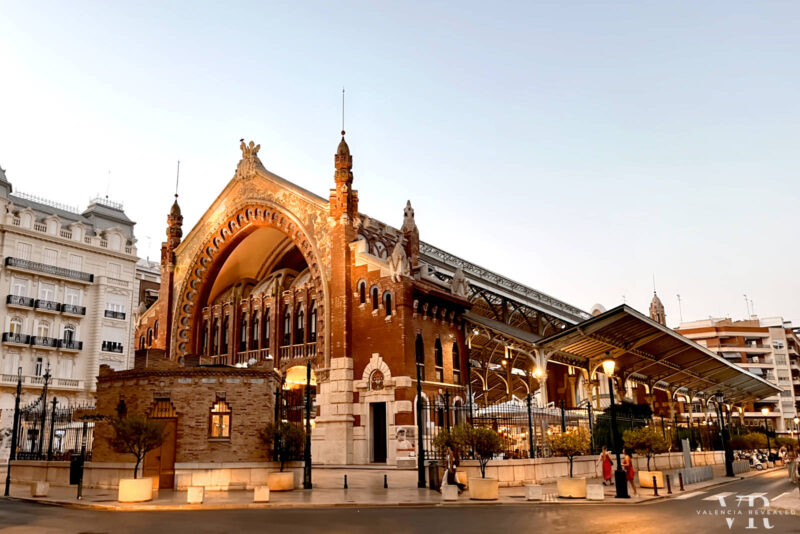
Mercado de Colón is another grand market you must see in Valencia. Inaugurated in 1916, it served as a fresh produce market until the end of the century when it fell into despair. After a complete makeover in 2003, it now houses an array of trendy cafés and gourmet restaurants.
This stunning landmark is located in the affluent Pla del Remei neighborhood, a short walk from Calle Colón, the city’s main shopping street. So if you need a pick-me-up while doing your shopping in Valencia, you won’t find a more elegant place to enjoy a typical Valencian drink.
My go-to place is Horchatería Daniel because they have some of the best horchata in Valencia. You can also elevate your experience with a meal at Bar X or Habitat, both restaurants owned by Michelin-starred Valencian chef, Ricard Camarena.
Mercado de Colón was designed in Modernista style by local architect Francisco Mora. It features a large nave with a majestic wrought iron ceiling supported by 18 m high columns. The two red brick facades are decorated with mosaics illustrating everyday life scenes from Valencia.
The market has two levels. At the lower one, you can still find a few stalls selling fresh fruits, vegetables, seafood, and meat, a reminder of the market’s original purpose.
Craft markets and cultural events are organized here throughout the year, including one of Valencia’s most festive Christmas markets. You’ll also find a cute flower shop by one of the entrances.

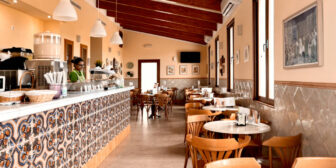

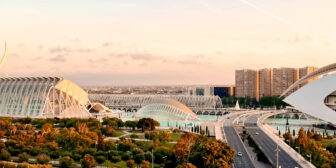

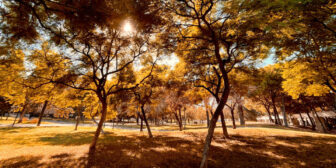
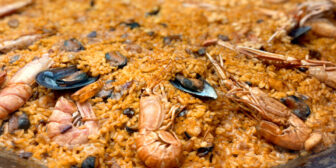
Thank you!!
It is a well detailed explanation of the landmarks to visit.